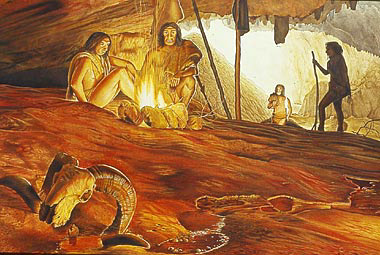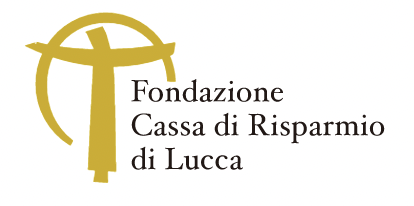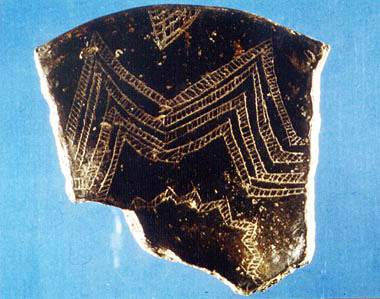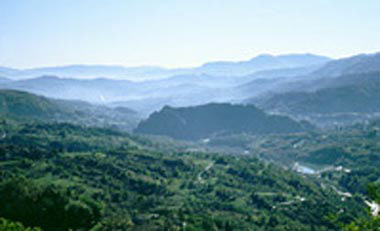
The Palaeolithic (or Early Stone Age) is the historical period which began about 2,500,000 year ago when Homo habilis and all successive human species evolved in Africa. The Palaeolithic is included in the Pleistocene, a period in which geologists and naturalists divide up the Quaternary, the present geological era, according to climatic changes.
Given the need to schematically classify the cultural periods and main phases regarding the evolution of man's technology, archaeologists have divided up the Palaeolithic into three different periods: the Lower Palaeolithic (from 2,500,000 to 250,000 years from the present day), the Middle Palaeolithic (from 250,000 to 35,000 years from the present day) and the Upper Palaeolithic (from 35,000 to 10,000 years ago).
This chronological sub-division regarding cultural changes does not entirely coincide with the proposals put forward by geologists and naturalists for sub-dividing the various climatic periods of the Quaternary, based on wider and much more gradual changes in the natural environment.
The most important cultural breakthrough during the Lower Palaeolithic was undoubtedly the direct production of fire which allowed for the cooking of meat. This therefore determined important changes in the masticatory apparatus and man's living conditions. This important acquisition was probably achieved in Africa for the first time approximately 1,000,000 years ago, while the use and production of fire in Asia and Europe is confirmed as having taken place approximately 500,000 years ago.
In general, the Middle Palaeolithic deals with the spreading of Homo neanderthalensis as well as the final period of the Upper Palaeolithic refers to the presence of Homo sapiens and the latest technological development of stone tools.
The appearance of the first artistic representations during the Upper Palaeolithic age is considered as another very important step in the cultural evolution of prehistoric man. They are known as "rock art" that depicts animals in a "naturalist style" painted using ochre and carbon, or engraved on the walls of the caves and "movable art" that includes various types of small artefacts such as engraved tools and ornamental objects obtained from bone, stones, engraved or painted in ochre depicting animal or geometric subjects. Palaeolithic rock art is mainly concentrated in southern Europe in countries such as Spain (Altamira caves) and France (caves in the Dordogne region). This type of art is present in Italy in the caves of Liguria (Balzi Rossi, near Imperia), Apulia (the Grotta Paglicci near Foggia and Grotta Romanelli near Otranto), Calabria (Grotta del Romito of Papasidero) and Sicily (Grotta dell'Addaura and Grotta Niscemi near Palermo and Grotta del Genovese at Levanzo). "Movable art" is much more widespread and present in different European and Italian archaeological sites. In Tuscany we have a very good example of a human face engraved on a limestone fragments togheter with many other engraved artefacts found at Riparo di Vado all'Arancio in Grosseto.
In the north-western area of Toscana, there is a lack of evidence regarding the presence of the most ancient species of man during the Lower Palaeolithic, although many of his stone tools have been found in the nearby Valle dell'Arno and the area surrounding the coast of Leghorn. The traces of Homo heidelbergensis who frequented the Versilia, Garfagnana and Lunigiana in that period are in fact laying under more recent accumulated sediments.
In our area in the Middle Palaeolithic the esclusive presence of Homo neanderthalensis is documented between 90,000 and 40,000 years ago and the occurrences of Homo sapiens in the Upper Palaeolithic ranges between approximately 35,000 and 10,000 years ago.
The remains of Homo neanderthalensis represent the first occurrence of human fossils to be recognised and studied by anthropologists in the Valley of Neander in Germany in 1856 and are today well-known following numerous finds in Europe and Asia. Neanderthals had sturdy bone structures and muscles and their skeletons had slightly different characteristics compared to present day man . This is noted in the shape of the skull which was lower and more developed in width and length and presented a receding forehead and an accentuated thickness in the arch of the eye sockets. For reasons unknown to anthropologists, Neanderthal man became extinct in all the geographic areas around 28,000 years ago.
The remains of Neanderthal skeletons in Italy, which are rare and fragmentary, cannot be considered as Having been buried intentionally, and have been found exclusively in caves in Liguria, Lazio, Campania, Abruzzo, Apulia, and Calabria, dating back to 90,0000 years ago while numerous finds of their tools have been made everywhere. In north-western area of Toscana the remains of Neanderthal skeletons have only been recorded at Buca del Tasso (Camaiore) where was discovered the femur of a nine years old child, while tools and bones of game hunted by the Neanderthal for eating purposes are numerous.
Many more remains of Homo sapiens skeletons have been found in Europe and in countries of east Mediterranean belonging to the Upper Palaeolithic period. Remains are linked to intentional burials, with a ritual that often included the presence of personal objects to accompany the dead (ornaments, tools etc.) as a funeral equipment, food supplies and the usage of sprinkling the dead person's body with ochre. The oldest burial in human history is that of a woman with a child at her feet, dating back to 100,000 years ago, found at Qafzeh near Nazareth in Palestine.
The presence of Homo sapiens in north-west Tuscany is only recorded thanks to the finds of stone tools and hunted animals and not by skeleton remains as yet. The only archaeological site where human remains have been found belonging to the Upper Palaeolithic is Riparo di Vado all'Arancio (Grosseto) in southern Toscana: an adult who was approximately 20 years old and a 2 years old boy were buried here.
Details:
Archaeological evidence from various parts of Europe, Asia and Africa proves that human groups lived in caves or in outside huts which were sometimes built with a base of stone and roofed using bushes and animal skins. Shelters built during the Middle Palaeolithic were always temporary and frequented for brief lengths of time, while camps which were organised outside and inhabited for longer periods of time are characteristic of the Upper Palaeolithic.
There is a lack of evidence surrounding Palaeolithic dwellings in north-western area of Toscana. We do not know about the kind of habitation used by the Neanderthals in particular, although from instruments found sporadically in the caves of the Versilia and Lunigiana and more so in Lago di Massaciuccoli, we can assume that during the milder phase around 40,000 years ago their temporary dwellings would have been situated in both mountain zones and on the costal plains. Instead, we can presume that during the glacial period in the Upper Palaeolithic, hunters-gatherers groups would have organised their temporary camps in the lowlands where temperatures were milder. Climatic improvements during the post-glacial period meant that hunters-gatherers started frequenting the highlands once again. This is documented through numerous findings connected to lithic industries in the final phase of the Upper Palaeolithic period together with animals which typically inhabit the mountains such as the ibex, chamois and marmot. In the Alpi Apuane have been found numerous lithic industry assemblage of the final phase of Upper Palaeolithic, especially in the areas of Castelnuovo Garfagnana, Careggine and Molazzana. The most important archaeological sites are Isola Santa, Riparo Piastricoli and Riparo Fredian. In Val di Lima the final Upper Palaeolithic is attested in Grotta delle Campane and in Grotta di Ponte Nero at Bagni di Lucca. They are "base camps" situated in a cave or outside, close to the bottom of a valley. Instead settlements at high altitude are found in the montainous area of Piazza al Serchio up to the high ridges of the Apennines, from the Passo di Pradarena to the Passo delle Forbici, where there were found flint tools from this period in numerous places. At Parco dell'Orecchiella, the "lithic manufacture", like those of La Greppia and Casini di Corte, linked to the supplying and working of local flint. During recent excavations at Grotta all'Onda, near Camaiore, the remains of a hearth dating back to the final phase of the Upper Palaeolithic was brought to light.
During the Lower Palaeolithic, our ancestors were unable of hunting large size game despite being able to make stone tools, and fed on the remains of animals that were preyed on by the numerous carnivores living on the territory.
The technique of flaking stones allowed them to obtain different shaped tools for stripping flesh from their prey. Archaeologists call them "lithic instruments" or the "lithic industry". In the beginning, the lithic industry was very rudimentary: the tools were obtained from large pebbles, found in the rivers, whose extremity was removed by splintering, using another stone as a percussion in order to obtain sharp edges. These first tools are called "choppers". More complex instruments obtained by splintering pebbles on their surfaces, producing typical almond shaped tools are knowed as "bifacials" or "amygdaloids".
With the passing of the millennia and man's evolutionary progress, instruments varied and became increasingly more specialized. It can be assured that wood had been used since the most ancient times in the history of man, but such products have not been found given that this kind of material rots very quickly in almost all types of terrain.
The economy of the Neanderthals and our most ancient predecessors was characterized by a continual nomadism whereby small family groups hunted game and picked wild fruit. Homo sapiens lived instead in larger communities and moved around their territory following the migratory patterns of animal herds.
The "lithic industry" belonging to Homo neanderthalensis during the Middle Palaeolithic age is much more specialised in comparison to tools produced during Lower Palaeolithic times, with burins, scrapers, scratchers, points and denticulated instruments. All of these instruments were used to work on animal skins and wood. Stone artefacts were obtained from flint which was the raw material chosen by prehistoric man all over the world as it could cut very well and was suitable for flaking. However, we are certain that wood was also used to make spears for hunting large size animals such as the cave bears and horses. The Neanderthal lithic industry is known as Mousterian in all geographical areas in Europe, due to the name place Le Moustier in France where it was discovered and studied for the first time.
Tools made by the Neanderthals have been found in Versilia in the basin of Lago di Massaciuccoli (Viareggio/Massarosa), in the deposits of Grotta all'Onda and Buca del Tasso (Camaiore), Grotta del Capriolo, Buca della Iena (Massarosa) and Grotta di Equi Terme in Lunigiana.
Adopting new flaking techniques on raw material, Homo sapiens was able to produce long and thin laminar shaped instruments. Even bones and horns were often worked on to produce different shaped tools as well as ornaments.
Homo sapiens lithic industry, during the Upper Palaeolithic period, has been found in north-west Tuscany, particularly at lower altitudes along the coastal plains as mountainous zones could not have been highly frequented during the last glacial period. The highest concentration of tools is found in the area of Lago di Massaciuccoli in the sediment of strata at present submerged which were instead above the surface at the time of the lowest level of the sea. In this glacial period the islands of the Tuscan archipelago, such as Elba and Pianosa were reached and peopled. There was just one temporarily inhabited cave in North-West Tuscany during this cold period, Grotta del Leone di Agnano (Pisa), which lies at a low altitude on the Pisa plain. During the milder final phase of the Upper Palaeolithic, instruments were also found at high altitudes in the Grotta all'Onda and Buca della Iena in Versilia and in the high Garfagnana.
These little instruments in flint, in particular scratchers and backed tools, were inserted into a handle on a wooden support. These formed the sharp parts of spears used for hunting, which were thrown using a particular tool, the propulsor that allowed to increase the length of the throwing. In this period the human groups that lived in the mountains practised hunting especially the ibex; from the remains of the bones of these animals we know that in the settlements in the Valley of the Serchio the ibex formed 80% of the prey killed.
Climatic events occurred during the Palaeolithic age conditioned man's survival which was closely linked to his surrounding natural environment providing him with food resources. "Glaciation" phases consisting of very cold temperatures and high aridity, alternated with milder, wet temperatures which were called "interglacial": the animals, just like man, adapted to the different environmental conditions by migrating north or south depending on temperature fluctuations. Remains of bones of prehistoric animals including pollens and carbon fossils contained in archaeological deposits, are therefore very important for reconstructing the climate and ancient vegetal environment: species such as the mammoth , woolly rhinoceros, elk, ibex and marmot witness to a cold climate, while the presence of the rhinoceros and especially the hippopotamus or other animals from typically warm and humid environments allow us to single out periods of temperate warm climate.
Based on studies of the remains of vegetal organisms, as well as of animal organisms, both marine and terrestrial, we know that 40,000 years ago, during the Middle Palaeolithic, when the Neanderthal population lived in Versilia and the internal mountainous areas, there was a warm and quite humid climate. Horses, rhinoceros, leopards and wild cattle populated the coastal plains while the mountains were full of deers, wild boars, fallow deers and cave bears. An intense cooling down period started about 30,000 years ago (the Upper Palaeolithic period) and reached its acme between 20,000 and 18,000 years ago.
During this phase, thick ice caps covered the alpine zone, reaching the Po Valley, while the gradual regression in sea level until 100 metres under the present level, revealed along the Tuscan coast a vast plain, with extensive marshes, which reached the islands of the archipelago. Silver fir, birch, mountain pine and Scots pine forests expanded and stretched toward the sea coast while on the high mountain ridges there was a spreading of shrub vegetation, particularly juniper which was typical of the steppe. The gradual rise in average annual temperatures over the course of thousands of years determined the shrinking of the alpine ice caps and the increase in rainfall which slowly re-established the coastline at its present level. Evidence of dwellings and hunting activities lying on these wide coastal plains during the Palaeolithic age was therefore submerged. This climate improvement also determined a new forest expansion but with species typical of warmer environments such as the oak, alder, hazel-nut and ash. These changes also prompted large size animals typical of cold environments, such as the mammoth and woolly rhinoceros, to migrate northwards.







